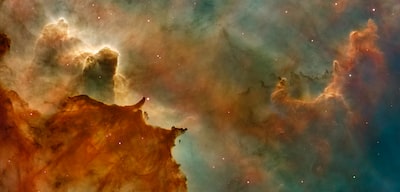The Universe’s Mind-Boggling Paradox: 13.8 Billion Years vs 93 Billion Light-Years
Hello, fellow cosmic explorers! Today, we’re delving deep into the enigmatic world of the universe’s age and size—a topic that continues to perplex even the most seasoned astronomers. While the age of the universe is commonly cited as 13.8 billion years, the observable universe stretches a staggering 93 billion light-years across. Why this difference? Let’s unravel this cosmic paradox.
The Age of the Universe: 13.8 Billion Years
To begin, let’s delve further into what we mean by the age of the universe. According to scientific estimates, the universe’s birth occurred approximately 13.8 billion years ago. This means that we are living in a universe that has been around for an incredibly long time. This age was calculated using various techniques, including the observation of the cosmic microwave background radiation (CMB), which is the radiation left over from the Big Bang. The study of distant galaxies also contributed to this calculation, as did the measurement of cosmic expansion. It’s truly remarkable to think about how much we have learned about the universe and its age through these methods of observation and calculation.
The Big Bang Theory, which is the most widely accepted cosmological model, forms the basis for this calculation. According to this theory, the universe began as a singularity—a point of infinite density and temperature—billions of years ago. It then expanded rapidly from there, causing a cosmic explosion that gave rise to everything we see around us today.
This explosion marked the beginning of the universe’s evolution into the vast cosmos we observe today. As the universe continued to expand and cool, matter began to form and clump together, eventually giving rise to stars and galaxies. These celestial objects continued to evolve and interact with one another over billions of years, leading to the formation of the complex and diverse universe we know today.
While the Big Bang Theory remains the most widely accepted explanation for the origins of the universe, there are still many unanswered questions about the nature of the singularity and the early moments of the universe’s existence. Scientists continue to study and explore these mysteries, using advanced technologies and theoretical models to gain a better understanding of the universe’s history and evolution.
The Expanding Universe
One of the key insights that led to the current estimate of 13.8 billion years as the age of the universe is the observation that the universe is expanding. This expansion is not unlike inflating a balloon, where galaxies move away from each other as the space between them stretches. This is a remarkable discovery, as it implies that the universe is not static but constantly evolving. The expansion of the universe is due to something called dark energy, which is a mysterious force that is causing the universe to accelerate in its expansion. Scientists are still working to uncover the secrets of dark energy and its effects on the universe.
By tracing the expansion of the universe backward in time, scientists are able to arrive at the age of 13.8 billion years. This is a complex process that involves analyzing the movement and behavior of galaxies over vast distances and time scales. It is a testament to the ingenuity and perseverance of scientists that they are able to gather and interpret such data, and use it to unlock the mysteries of the universe.
It is worth noting that the estimate of 13.8 billion years is not set in stone, and may be subject to revision as new data and insights are gathered. However, it is currently the best estimate that we have, and represents a major milestone in our understanding of the universe and its origins.
The Observable Universe: 93 Billion Light-Years
Now, let’s delve deeper into the vastness of the observable universe. This concept is grounded on the premise that the information we can gather about the cosmos is limited by the speed of light. The observable universe, therefore, refers to the area of space from which light has had enough time to reach us since the Big Bang, which is estimated to have occurred around 13.8 billion years ago. The universe has been expanding ever since, and while there are still many mysteries surrounding its origins and evolution, we know that the observable universe encompasses a staggering amount of matter and energy, including galaxies, stars, planets, black holes, and much more. As we continue to develop new telescopes and detection methods, we can hope to unravel some of these mysteries and gain a deeper understanding of our place in the universe.
The universe is truly an enigma, with so many mysteries and unanswered questions. One of the most puzzling aspects is the observable universe, which spans an incredible 93 billion light-years in diameter. This is a mind-bogglingly vast expanse, and it raises numerous questions about the nature of the universe and its origins.
One of the most perplexing aspects of the observable universe is that it is far larger than the universe’s age. This presents a seemingly insurmountable problem, as nothing can travel faster than light according to the laws of physics. So how is it possible that the universe has expanded so much in such a short amount of time?
Scientists have proposed several theories to explain this phenomenon, including the theory of inflation and the concept of dark energy. The theory of inflation suggests that in the earliest moments of the universe’s existence, it underwent a rapid and exponential expansion that lasted just a fraction of a second. This sudden expansion could have stretched the universe to its current size, even though it is much younger than the observable universe.
Another theory is that of dark energy, which is a mysterious force that permeates the universe and causes it to expand at an accelerating rate. While the nature of dark energy is still poorly understood, it is thought to make up a significant portion of the universe’s total energy content.
Despite these theories, the true nature of the universe’s vast size remains a mystery. It is a puzzle that has confounded scientists for decades, and it will likely continue to be a subject of intense study and debate for many years to come.
Cosmic Expansion and the Speed of Light
The resolution to this paradox lies in understanding how cosmic expansion operates in the fabric of spacetime. It is important to note that the universe’s expansion doesn’t violate the speed of light constraint. This is because the space between objects is stretching, not the objects themselves moving through space. In a sense, it’s like the space itself is expanding, which leads to the appearance of objects moving away from each other at faster-than-light speeds. This is a fascinating concept that has been the subject of much study and debate in the scientific community. In fact, some scientists believe that this phenomenon could have implications for our understanding of the nature of space and time itself. It is clear that there is much more to be explored and discovered about the mysteries of cosmic expansion and its impact on our understanding of the universe.
The concept of the universe’s expansion can be compared to the inflation of a balloon. If we were to place dots on the balloon’s surface and then inflate it, the dots would move apart as the balloon expands. However, it is important to note that no dot on the balloon’s surface surpasses the speed of inflation. Similarly, galaxies in our universe move apart due to the expansion of space itself. This phenomenon, known as the expansion of the universe, has led scientists to theorize about the origins of the universe and the possibilities of its future. Some have even suggested that the universe may continue to expand indefinitely, while others believe that it may eventually collapse under its own gravity. Regardless of what the future may hold, the concept of the universe’s expansion is both fascinating and awe-inspiring, serving as a reminder of the vastness and complexity of our universe.
The Cosmic Horizon
The 93 billion light-years represent an incredibly vast distance, one that is almost impossible to fathom. To put it into perspective, imagine a distance so immense that light, traveling at a mind-boggling speed of 299,792,458 meters per second, would take 93 billion years to traverse it. This distance is a testament to the enormity of the universe and the incredible forces that shaped it.
It is important to note that during the time it took light to travel this distance, the universe continued to expand. This expansion has had a significant impact on the light that has traveled toward us from distant objects. As the universe expanded, the distance that light had to traverse increased, effectively stretching the distance it needed to cover. This stretching effect is known as redshift and has been used by scientists to gain insights into the evolution of the universe. In other words, the 93 billion light-years we see today are not a static representation of the universe but rather a snapshot of its evolution over billions of years.
Think of it as a runner on a treadmill, where the treadmill represents the expanding universe. The runner may cover a certain distance while running, but if the treadmill speeds up during the run, it will take longer to reach the end. Similarly, as the universe expands, light from distant galaxies has to travel a longer distance to reach us, and this causes the light to be stretched out, making it shift towards longer wavelengths. This phenomenon is known as redshift, and it is evidence of the universe’s expansion. As a result, we are able to observe objects in the universe that are much farther away than we would have been able to without the expansion. This effectively increases the size of the observable universe and allows us to learn more about the history and evolution of the cosmos.
Conclusion
In summary, the apparent paradox between the age of the universe (13.8 billion years) and the size of the observable universe (93 billion light-years) is a fascinating topic that has intrigued scientists for decades. It is a complex concept that is not easy to understand, but it is important to explore it further to fully comprehend the universe’s nature.
The paradox arises due to the expansion of spacetime itself. While the universe’s age remains fixed at 13.8 billion years, the expansion of space continually extends the cosmic horizon, allowing us to observe objects that are now much farther away than they were when their light began its journey. This extension of the cosmic horizon is due to the universe’s expansion, which is caused by dark energy, a mysterious force that scientists are still trying to understand.
Scientists believe that dark energy is responsible for the accelerated expansion of the universe. This means that the universe is expanding at an ever-increasing rate, causing the cosmic horizon to extend further and further away from us. It is an exciting field of study that has the potential to revolutionize our understanding of the universe and its origins.
In conclusion, the paradox between the age of the universe and the size of the observable universe is a complex concept that requires further exploration. The expansion of spacetime, caused by dark energy, is responsible for the extension of the cosmic horizon, allowing us to observe objects that are now much farther away than they were when their light began its journey. This fascinating topic is an active area of research, and scientists are working hard to understand the universe’s mysteries.
This cosmic conundrum, which has puzzled scientists for decades, serves as a poignant reminder of the intricate and mind-bending nature of the universe we inhabit. It raises important questions about the fundamental nature of reality and the limits of human understanding. While some might find such paradoxes frustrating or even discouraging, others see them as a call to action – a reminder of the endless potential for discovery and exploration that lies ahead. Indeed, it is precisely in these enigmatic paradoxes that lie the seeds of new discoveries and a deeper understanding of the universe’s mysteries. By continuing to question and challenge our assumptions about the cosmos, we open ourselves up to new possibilities and insights that can help us unravel some of the universe’s most perplexing mysteries.
The story of the cosmos is an endless one, spanning across time and space, and filled with fascinating discoveries and mysteries waiting to be unravelled. As we look out into the vast expanse of the universe, we are constantly reminded of the incredible scale of creation, and the endless possibilities that exist beyond our planet. From the smallest particles to the largest galaxies, every aspect of the cosmos holds secrets and wonders that are waiting to be explored. So let us continue to stay curious, to keep looking up at the stars, and to never stop seeking out the incredible stories that are hidden within the depths of the universe.







